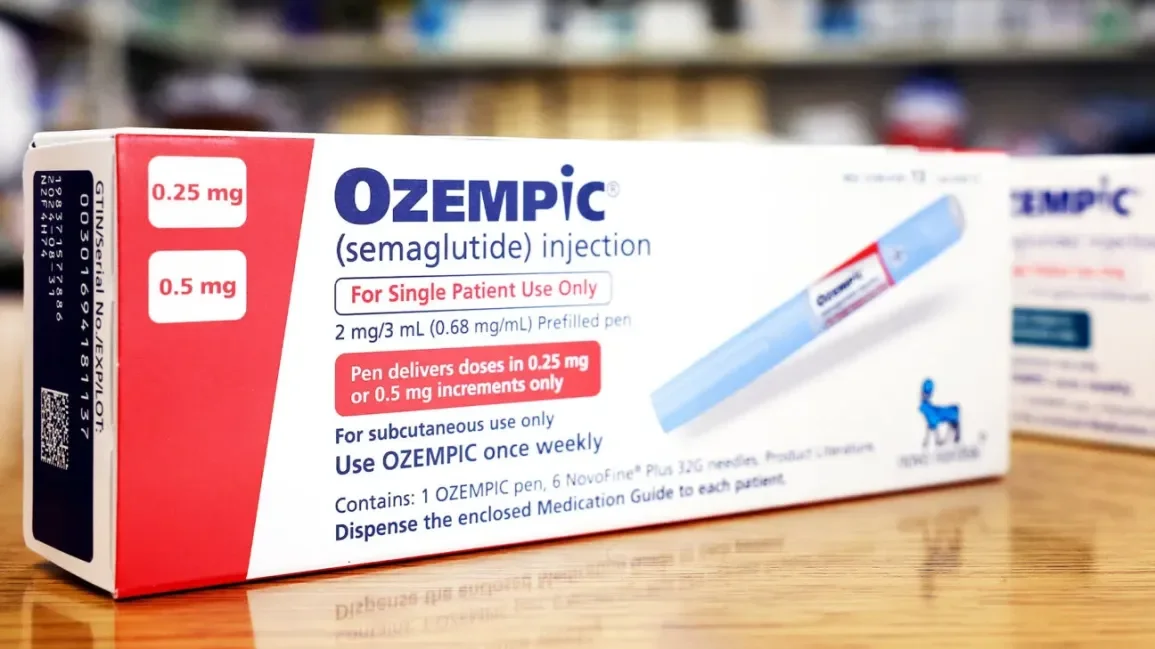The Dark Side of Ozempic & Wegovy: What You Need to Know
These GLP-1 drugs have become the latest quick-fix for fat loss — but their popularity hides many risks. Here’s how they work in the body, what side effects people are actually reporting, and why so many end up in emergency room.
How These Drugs Work
Ozempic and Wegovy contain semaglutide, a synthetic version of a hormone your gut naturally makes after eating called GLP-1 (glucagon-like peptide-1).
What it does in your body:
Slows digestion, so food lingers — which makes you feel fuller longer
Curbs your appetite by acting on brain circuits
Boosts insulin production when you eat, helping lower blood sugar
Suppresses glucagon, a hormone that raises blood sugar when you fast
These effects can lead to dramatic weight loss — but not without a price.
Common Side Effects — and How Often They Happen
In clinical studies and real-world use, GI symptoms are the most common side effects:
Nausea: reported by 50–53% of users vs. 22% on placebo
Vomiting: 30% vs. 5% on placebo
Diarrhea: 35% vs. 24% on placebo
Constipation: 31% vs. 11% on placebo
Abdominal pain, indigestion, gas: reported by 14–13% compared to 4–6% on placebo
Other known issues:
Gastroparesis (slow stomach emptying) and intestinal blockages — serious but less common
Pancreatitis in rare cases, though clinical evidence is mixed
Weight regain after stopping — common unless diet/lifestyle changes are in place
Why People End Up in the ER
A recent analysis of emergency room visits across 82 U.S. hospitals revealed:
There were 551 ER visits due to semaglutide over two years
70% of those were for GI issues (nausea, vomiting, diarrhea) — 15% required hospitalization
16.5% were for low blood sugar, and 38% of those cases were hospitalized
Other rarer issues include pancreatitis, gallbladder inflammation, vision changes, and nerve pain
Long-Term Risks You Should Know
Beyond GI upset, some concerns have surfaced in trials and monitoring:
Thyroid cancer warning: Rodents on GLP-1 drugs had C-cell tumors, so the FDA requires a boxed warning — avoid in those with thyroid cancer risk
Eye disease: Slightly higher risk of age-related macular degeneration (0.2% vs. 0.1%) in older users
Hair loss: Reported increased risk compared to some other treatments (52% higher risk)
Dry mouth, altered taste ("Ozempic mouth"): Documented in real-world use, can irritate oral health
How Effective Is Weight Loss — and Is It Sustainable?
Clinical results can look dramatic on paper:
In the STEP-5 two-year trial with Wegovy, users lost an average of 15.2% of their body weight vs. 2.6% on placebo
In real-world observations, people lost around 10–11% in 4 months
But as noted, weight often rebounds if lifestyle changes aren’t implemented and maintained after stopping the drug. The weight loss often is not permanent because lifestyle does not change.
Effects on Aging, Bones, the Face & Internal Organs
1. Accelerated Facial & Skin Aging ("Ozempic Face")
While many experienced a leaner profile, a growing body of research suggests that semaglutide may accelerate facial aging in some users — and not just due to rapid fat loss alone.
A 2025 review found that GLP-1 receptor agonists (like semaglutide) may stimulate aging by altering key skin-supportive cells. They can reduce activity in adipose-derived stem cells (ADSCs), decreasing protective cytokines, increasing oxidative damage, and impeding collagen production from dermal fat tissue. This may cause the “deflated" look known as "Ozempic face".
Dermatology surgeons have reported actual measurable declines in mid-facial volume — beyond what weight loss alone would predict.
Experts also point to rapid fat loss and decreased nutrient intake (like protein and hydration) compromising skin elasticity, accelerating that sagging, prematurely aged appearance.
Image from the Plastic Surgery Center
Key takeaway: Facial aging from semaglutide may stem from both fat loss and deeper cellular changes — especially when intake of collagen-supporting nutrients, hydration, and pace of weight loss are not prioritized.
2. Impact on Bones and Lean Mass
GLP-1 agonists may pose risks to bone density and lean muscle, particularly when weight loss is rapid:
A UK report warns of bone deterioration, especially in older adults and women, when appetite suppression leads to nutrient deficiencies. Loss of lean mass, including bone, raises long-term fracture risk unless countered with proper nutrition and weight-bearing exercise.
Another in vitro study found semaglutide stimulated osteogenic differentiation in bone marrow stem cells, suggesting potential anabolic effects — though this hasn’t yet translated into human trials.
Key takeaway: While semaglutide may encourage lean-muscle and bone health on a cellular level, real-world users should be cautious: adequate protein, calcium, vitamin D, resistance training, and monitoring are crucial to avoid unintended bone or muscle loss.
3. Effects on Internal Organs, Aging & Beyond
Anti-Aging Signals:
A recent SELECT trial indicated that semaglutide may reverse biological age by an average of 3.1 years, particularly benefiting brain, heart, kidneys, and inflammatory systems. Researchers attribute this to improved fat distribution and reduction of systemic inflammation.
GLP-1 drugs are also being explored for broader longevity benefits, such as reduced risk of Alzheimer’s, osteoarthritis, certain cancers, and overall mortality—though experts caution these reports are preliminary and not proof of long-term safety.
Organ-Specific Effects:
In a controlled trial of elderly diabetic patients, semaglutide improved blood sugar control (HbA1c), reduced liver enzymes and visceral fat, without negative changes in liver or kidney biomarkers.
Laboratory animal studies raise concerns that semaglutide might reduce cardiac (heart) muscle mass — possibly beneficial when hypertrophy is present, but could be problematic if it contributes to unintended cardiac atrophy. Some studies in mice and human heart cells have shown that semaglutide (the active ingredient in Ozempic) can cause heart muscle to shrink, the clinical significance of this in humans is still being investigated and is not fully understood
Key takeaway: Semaglutide may offer signals of anti-aging and organ health benefits through metabolic improvements and inflammation reduction, but potential unintended effects—especially without lifestyle support—underscore the need for caution, clinical monitoring, and more long-term studies.
Bottom Line:
GLP-1 drugs like Ozempic and Wegovy may offer short-term aesthetic or metabolic benefits — but the dark side includes accelerated facial aging, potential bone and lean mass loss, and uncertain long-term effects on organs and aging. If considering or using these drugs, especially off-label, please do so under medical supervision with a plan for nutrient support, strength training, skin care, and long-term monitoring. At the end of the day, the choice is yours - you should just know all the facts and the risks. Stick with me for future tips on healthy, sustainable fat loss!
References
Healthline – Ozempic Side Effects in Females vs. Males, common GI side effects percentages
Verywell Health – How Wegovy Helps You Lose Weight, description of mechanism (slowing gastric emptying, appetite suppression)
Nature Medicine – STEP-5 Trial, two-year weight loss data (15.2% vs. 2.6% placebo), and high rate of gastrointestinal adverse events (82.2% vs. 53.9%)
New York Post, ER visits due to semaglutide—70% for GI issues (15% hospitalized), and 16.5% for hypoglycemia with 38% of those hospitalized Nature (re: dosage and side effect rates; same source as above but referencing real-world data)



